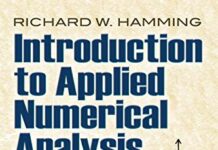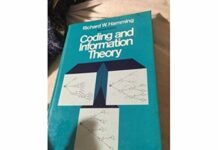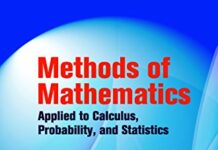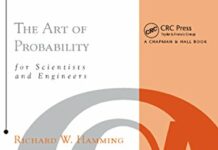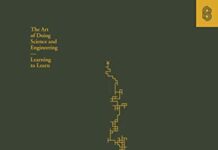
Ebook Info
- Published: 2013
- Number of pages: 306 pages
- Format: PDF
- File Size: 22.85 MB
- Authors: Richard W. Hamming
Description
Digital signals occur in an increasing number of applications: in telephone communications; in radio, television, and stereo sound systems; and in spacecraft transmissions, to name just a few. This introductory text examines digital filtering, the processes of smoothing, predicting, differentiating, integrating, and separating signals, as well as the removal of noise from a signal. The processes bear particular relevance to computer applications, one of the focuses of this book.Readers will find Hamming’s analysis accessible and engaging, in recognition of the fact that many people with the strongest need for an understanding of digital filtering do not have a strong background in mathematics or electrical engineering. Thus, this book assumes only a knowledge of calculus and a smattering of statistics (reviewed in the text). Adopting the simplest, most direct mathematical tools, the author concentrates on linear signal processing; the main exceptions are the examination of round-off effects and a brief mention of Kalman filters. This updated edition includes more material on the z-transform as well as additional examples and exercises for further reinforcement of each chapter’s content. The result is an accessible, highly useful resource for the broad range of people working in the field of digital signal processing.
User’s Reviews
Reviews from Amazon users which were colected at the time this book was published on the website:
⭐I needed this book to refresh some material related to personal research I am involved with and possibly an upcoming book I am planning tying up my work. The author is VERY CLEAR, WELL ORGANIZED and DOESN’T BORE with tons of nitty-gritty details so as to intimidate the reader in his presentation of the subject matter. It clearly shows the author is a person who actually worked in the industry with applications of digital filtering and signal processing rather than just some PhD person who never left the classroom.
⭐The author needs no introduction as filters and metrics bear his name. The book is a must for anyone who needs to trace the origin of various concepts. Sometimes older books contain that vital piece of information you might miss out on in “streamlined” treatments! And for this price, what are you waiting for?
⭐A nice little introductory text for beginners by one of the greats of (source) coding theory, oriented towards Computer Science majors not Electronic and Computer Engineering majors. Hardware implementers and professional filter designers need to look elsewhere.
⭐This is more of a bug report, not a review of the contents. I will remove or update when fixed.The kindle version of this book is not usable. The mathematical formulas are not readable. (yes I tried many devices and the desktop reader, the problem really is that the formulas have been scanned at so low resolution that some of the busier ones are unreadable) (also yes, I checked for updates, none available)Let me know if you want screenshots as proof. For now I have to recommend that you do not order the Kindle edition.
⭐I love the way the information is presented, in a smart and logical manner.
⭐Hamming famously said, “The purpose of computing is insight, not numbers.” This book follows that philosophy: it’s a clear, step-by-step development of simple FIR filters, which will make that part of the digital filtering world accessible to almost anyone. It’s at about a second-year undergraduate level, very suitable for self-teaching, and contains lots of lore that will help keep you out of trouble.My only complaint is that it doesn’t even dip a toe into recursive filters or optimal FIR filters, so that it is far from a complete treatment. If you’re new to digital filtering, especially if you don’t have an electrical engineering background, this is your book.
⭐Some years ago(!) Hamming held a seminar/workshop which I attended. This book was the handout. As I remember, he said that this book was a result of teaching students at the Naval Post Graduate School where he found that the students were smart/bright/quick, but just rusty on their math. As a result, the book is not intended for the same audience as Oppenheim and Schaffer.One item that appears to be unique is Hamming’s short piece on differentiating filters (the noise increases with frequency when the signal is differentiated, and practical application typically is not interested in the higher frequencies).This is not a cookbook for implementing digital filters. It is a good book for developing insight into the math and development of the basic dsp filter. I still pull it out to look up something, from time-to-time.
⭐This text by Hamming does a good job of covering what it does, but I expect that the modern student of DSP will be disappointed if he/she comes to this text for a main course in filter design. As much as Mr. Hamming says he will not develop the mathematics and theory separate of the application, to me this is exactly what the book does and what would confuse most readers. He develops the mathematics – although very well – in the first five chapters. Then he goes on to talk about filter design. In the filter design section he does talk about both FIR and IIR filter design, although he spends only two chapters on IIR filters. Also what is missing from this book is what makes digital filter design “work” – a discussion of linear time invariance, the various theorems regarding the discrete Fourier transform, and exactly WHAT is a Z transform in regard to a digital system. Also missing are block diagrams of filter designs, which are a necessary part of learning for most electrical engineering students. Finally, although there are student exercises throughout the book, there are no answers to any of them given, making the reader wonder if he/she is properly grasping the material.Thus my advice would be to use either the Oppenheim or Proakis text to learn DSP. However, in conjunction with either of those books, this book covers and emphasizes some mathematical aspects of digital filter design that are sometimes missed or not covered in depth in those books.
⭐The author contributed so much in stated the terminology used today. Also, the use cases, to much repeated afterward by others, are here for the first time introduced. Very refreshing reading all these.
⭐La editorial Dover se especializa, entre otras cosas, en la reimpresión de libros clásicos de ingeniería y ciencia. Es un libro que hace comprensible. los conceptos básicos de filtros digitales, uno de los mejores que he visto. Le doy 4 estrellas porque (como es normal debido a la época en que fue escrito) no utiliza paquetes de software actuales (MATLAB-SIMULINK y otros) y metodologías modernas. Que Hamming, cuya trayectoria vital fue impresionante en el campo de la ciencia e ingeniería, me perdone por no darle las 5 estrellas….
⭐
⭐Das Buch ist sehr gut geschrieben und bietet einen einfachen Einstieg in das Thema “digitale Filter” . Also. auch von mir fünf Sterne.
⭐
⭐Clearly written. Any one who needs to understand digital filters must read this book. Gives different view for understanding digital filters.
Keywords
Free Download Digital Filters (Dover Civil and Mechanical Engineering) in PDF format
Digital Filters (Dover Civil and Mechanical Engineering) PDF Free Download
Download Digital Filters (Dover Civil and Mechanical Engineering) 2013 PDF Free
Digital Filters (Dover Civil and Mechanical Engineering) 2013 PDF Free Download
Download Digital Filters (Dover Civil and Mechanical Engineering) PDF
Free Download Ebook Digital Filters (Dover Civil and Mechanical Engineering)
